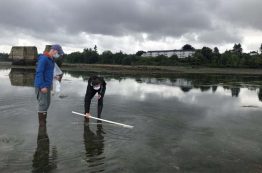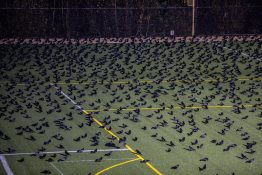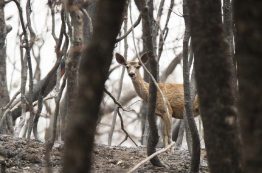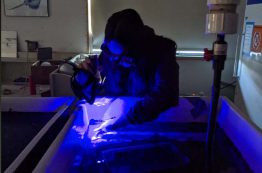European green crabs feast on shellfish, destroy marsh habitats by burrowing in the mud and obliterate valuable seagrass beds. The invasive species also reproduces quickly, making it a nightmare for wildlife managers seeking to control its spread in Washington’s marine waters. Last month, Gov. Jay Inslee issued an emergency order in response to more than 70,000 crabs caught on Lummi Nation land as well as dramatic increases in crab populations on Washington’s outer coast and other locations in Puget Sound in recent years.
Read more at UW News »This tiny coastal fish wears a toothy coat of armor
The ocean is full of otherworldly creatures, seemingly from alien planets with alien capabilities. In most cases, the award for craziest looking critter would go to an invertebrate. But many fish are contenders, too, and there’s an oddly adorable one common in northwest waters. What does it look like? Imagine a golf ball. Now put some googly eyes on it and add a suction cup to its belly.
Read more »A story of 10,000 crows: the nightly migration to UW Bothell campus
If you’ve ever looked towards the evening sky at University of Washington’s Bothell campus, you’ve probably witnessed the dark river of crows swarming above; and if you haven’t seen it, you’ve certainly heard it. Every night, 10 to 15 thousand crows make their nightly migration to the campus for a giant crow sleepover. According to John Marzluff, professor at UW School of Environmental and Forest Sciences, this nightly migration to a roost is a property of many corvids — the family of birds that includes crows, ravens, rooks, jackdaws, jays, magpies, treepies, choughs and nutcrackers.
Read more »After California’s 3rd-largest wildfire, deer returned home while trees were ‘still smoldering’
When a massive wildfire tears through a landscape, what happens to the animals? While many animals have adapted to live with wildfires of the past — which were smaller, more frequent and kept ecosystems in balance across the West — it’s unclear to scientists how animals are coping with today’s unprecedented megafires. More than a century of fire suppression coupled with climate change has produced wildfires that are now bigger and more severe than before.
Read more at UW News »Glowing fish teeth answer questions about tooth replacement rates
One of the facts of life for humans is the replacement of baby teeth with permanent adult teeth. Whether pulled out prematurely, wiggled loose by eager hands or naturally falling out unexpectedly, this occasion marks an important milestone in the maturation process that is shared amongst all vertebrates in some form. Imagine, though, losing and replacing a tooth every single day.
Read more »





